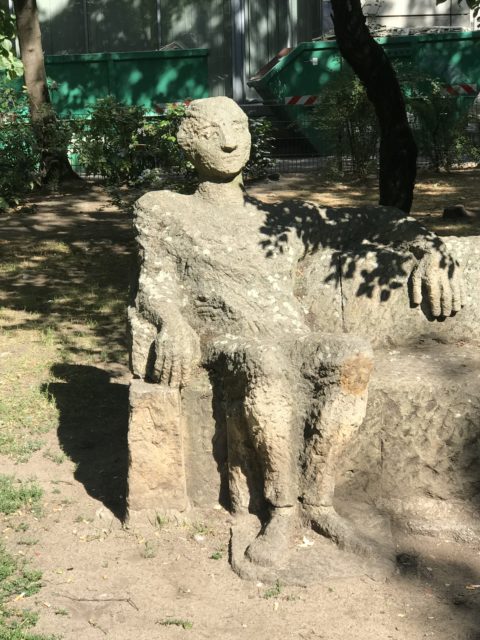I was out for my masked morning walk yesterday, when I ran into a fellow Jew. We started talking about the social upheavals in this country.
We agreed on most things, until she said: “This business about those army bases, like Fort Benning, that have the names of Confederate generals. Why bother changing the names of those army bases? Isn’t that just history?”
To which I answered: “For Jews, nothing is ever ‘just history.'”
Let me tell you what I mean by that.
Last summer, my son and I traveled from Jerusalem to Berlin.
Some “postcards”:
- Visiting the site of the book burnings, in the shadow of Humboldt University — reminding us that genocide can begin not with the rabble, but with the intellectuals who give it their support and imprimatur.
- Visiting the site of the 1943 Rosenstrasse protests, in which Aryan wives of Jewish men protested the arrests of their husbands by the Gestapo. The protests worked. Goebbels himself ordered the released of those 1800 men. He surmised that if the Nazis used force to crush the demonstrations, it would prompt wider protests all over Berlin, which could possibly even lead to the overthrow of the Nazi regime.
- Seeing the numerous plaques embedded in the pavements of the city, each one bearing the name of a Jewish victim. These are the stolpersteine, the stumbling blocks (as in “stumbling block before the blind”). The German artist Gunter Demnig started this project, placing those plaques at exactly the last place where the victims lived or worked.
I learned a new word recently — a German word that I can barely pronounce.
Vergangenheitsaufarbeitung. According to the author Susan Neiman in her book on the function of memory in Germany and the American South, it means “working off the past.”
That is the common task of Germany and the South — working off the past.
- Yes, the changing of the names of those military forts with Confederate names. We Jews have a custom of changing the name of someone who is critically ill. The United States is critically ill. The very least we can do is to change the names of those forts.
- Yes, the removal of the visible, physical reminders of the war for slavery. In the words of Rabbi Edelheit: “I want these artifacts of white supremacy placed in a national museum of American history that openly and self-critically reviews the entire past.”
And yes, something else.
Let’s take a cue from the stolpersteine.
In every place in the South where there was a lynching — a plaque.
When W.E.B. Du Bois visited the Warsaw ghetto in 1949, he was shaken by the parallels he drew with what he’d called the century’s greatest problem, the color line. After the 1963 Birmingham church bombing, James Baldwin said that white Americans share collective guilt for the persecution of black Americans as Germans did for their silence during the Nazi persecution of Jews.
If you are feeling dizzy, here is why. It is as if we are living through 1918 (the flu epidemic), 1968 (political unrest), and 2008 (economic meltdown) — simultaneously.
Add to that list: 1964 (the civil rights movement) and 1989 (the fall of the Soviet Union).
We have reached the proverbial tipping point. The American Berlin Wall — the wall of a culture of racism in this country) has begun to fall. The statues of Lenin fell; so, too, the statues of Confederate generals must fall.
And, you wondered about the meaning of that old “Negro” spiritual — “Joshua fought the battle of Jericho, and the walls came a-tumbling down.”
The walls of the American Jericho are a-tumbling down.
Back to Berlin. At the Rosenstrasse site, the Block of Women Memorial, there is a sculpture of a man sitting on a bench.
He is passive, blase about what he is seeing before his eyes.
Do we American Jews want to be the man on that bench?
Remember the success of Rosenstrasse.
Imagine: Rosenstrasse could have become the beginning of a Jewish Lives Matter movement.
Oh, if only….
Perhaps, our history would have been just a little bit different.






